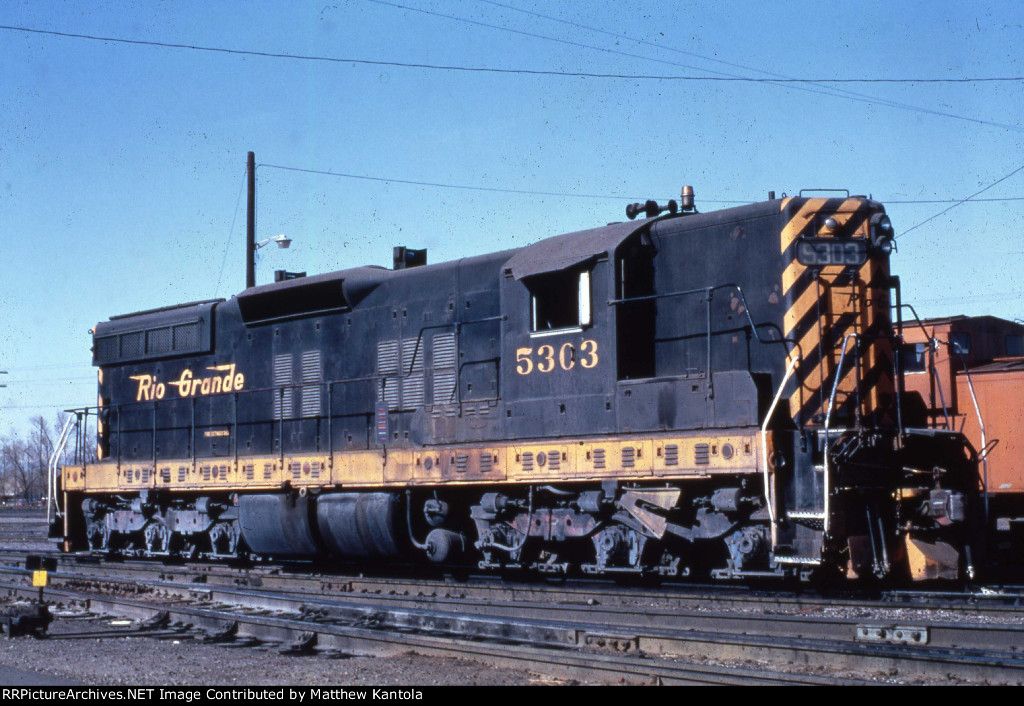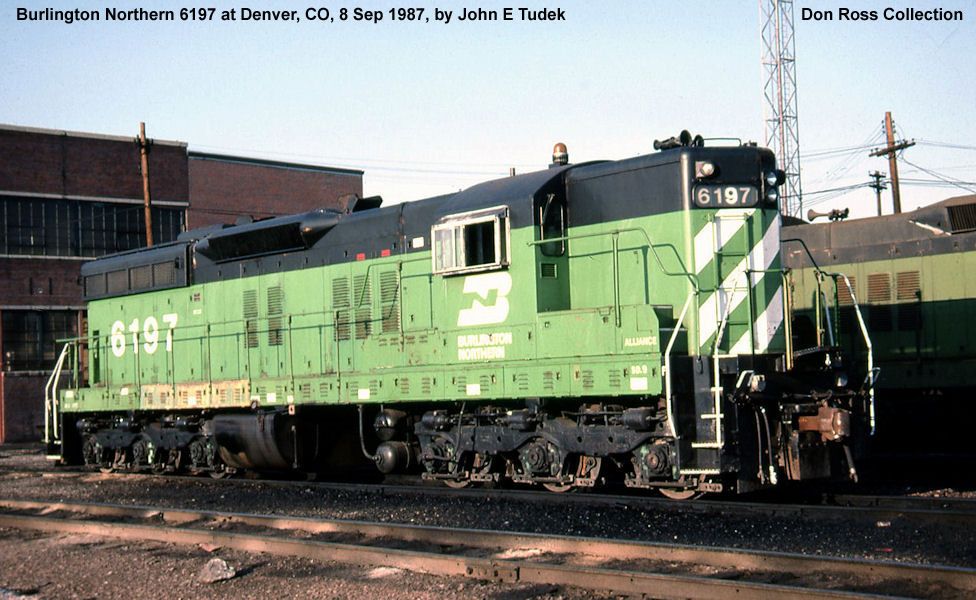I have written in the past about SD-9’s. These units, along with the SD-7 were EMD’s first six powered axle locomotives. The SD-7 and SD-9 basically look alike, except for a few minor cosmetic changes. The SD-7 had on the high short hood a small square indentation, and a flat convex lens for the class light. The SD-9’s adopted the “frog eye” class light like the GP-7’s, GP-9’s, GP-18’s and high and short hood GP-20’s.

A Rio Grande SD-7 you can see the rectangle and the class light.

A BN SD-9 notice the frog eye class lights above the number board
A consist of four or five SD-9’s was gonna be a long trip. These old war horses would get ya over the road. Like I said in previous posts, when ya throttled off at Palmer Lake, well ya had the geyser, and if you were the fireman you assessed, and corrected as need. If you were by yourself, ride the set to a stop, go back and do what was needed. Restart, least you have a compressor working for air.
The C&S SD-9’s came in two different cab styles, on the roster. The roster numbers were 820 to 842. The units from 820 to I believe 827 were dual control stand units. The rest had the old high stand AAR control stand, with the 26-C and SA-26 independents, like the newer units. The dual control stands were that, two operating in the cab. One, of course if in the lead, that was “cut-out”. The reasoning was, if operating a branch, or a “turn”, that had no Wye to spin the unit, you could, move over and operate, where signals could be seen.
They had the 24 brake valve equipment, and a K-2A “Rotair valve” for the independent brake. The Rotair valves were in and behind the control stand, via a latched door. The positions were Pass-Lead, Pass-Out, Freight-Lead, and Freight-Out. The Automatic brake valve had a spring actuated lever, pull up, and if in line with the brake valve Cut-out, at a 90 degree angle, Cut-in and activated.
Extra South train Joint-Line 1973 thru 1978
As I wrote in previous posts, an Extra is what? A train not authorized by timetable schedule. We were all “extra trains”, out here. Trains 151-152, 77-78, 424, 594, as designated as extra trains. Why, because there was no First and Second class designations on the time table. The dispatchers handled them as such, but we were all extras. Well this is the extras Extra. What is commonly known as a drag freight.
You’d see four or five SD-9’s out on the ready track, or fuel track at the 7th Street roundhouse at Rice yard. Yep, those are yours, for the trip. The “Nines” were slow, picked up a wheel slip, after 40 mph was reached. This was due to how the units were wired in the traction part of the equation. These had the standard EMD freight gearing a 62:15 gear ratio. 62 spur gear on the axle and 15 on the pinon gear. It was the “shunt set up” on the wiring. Like an automatic transmission, but with out the physical transmission. It was the resistance vs the connected traction motors. If I remember, transition was Shunt 0-15 mph (first gear), Parallel 15-40 mph (second gear). Series Parallel shunt 41-60 mph (Third gear). Parallel Shunt was 60 plus, meaning to the point where the traction motors, due to centrifugal force would unwind. The over speed on the speed recorder would shut ya down. plus maximum speed was stenciled or badged on the locomotive. Gearing versus wiring of the traction motors that your equation. Electrical relays, provided the changes.
You know this is going to be a “LONG!!!” trip. 5200 tons of drag, accumulated tonnage, and this is your power. LOL. Your paid to get tonnage over the railroad and the division. Four hours later, after you left the yard, Palmer Lake and gravity will have it’s way with you.
MP 50.5 to Palmer Lake Late evening:
Your lined up at Palmer Lake and still grinding. Sand is on, till you crest and start downward. Who knows, who what where and why, how many will shut down, when ya throttle off. Looking back on the reverse curves between MP 51 and MP 52 (Palmer Lake Summit ) a strange glow. You can see red flames surging in and out of the stacks. These motors are giving their all. A slow shut off, as the train balances, set of the air, and “Kings X” ya hope for now bells. LOL yeah they’ll ring.
If your smart, you’ll set air where Frank Kasulas or Gordon Euell told you to. Air…okay if you make that stalled release, look at the main reservoir. If it slow, you’ve lost some.. Ride to a stop, restart, on line maybe, maybe not. Water level is a key. Even if low, it is idling and rotating that air compressor. I can handle air down the grade.
A memory..... These are all gone or scrapped, unless a short-line or museum has one in their possession.




Loading comments...